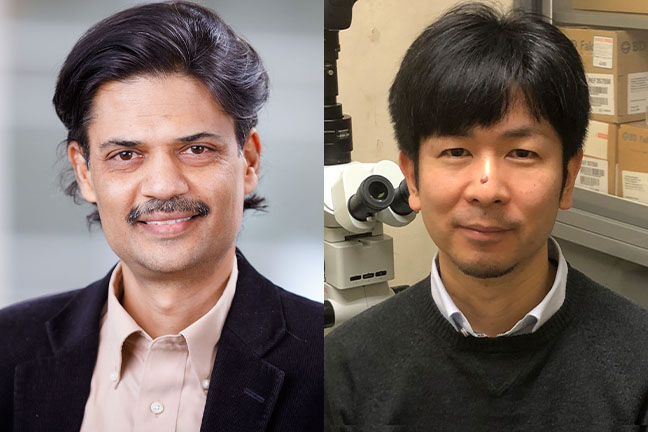UNMC researcher Channabasavaiah Gurumurthy, PhD, MVSC (DVM), contributing to a team from Tokai University, Japan, has co-authored a recent publication in the journal Genome Biology that heralds an exciting new advance in the use of CRISPR technology.
The discovery could become a key contribution toward the use of gene editing in many research fields, leading to developing human therapeutics.
CRISPR, which gave scientists the ability to “cut” individual genes from a genome, revolutionized the research world and won a Nobel Prize.
Then, Easi (Efficient additions with ssDNA inserts)-CRISPR, for which Dr. Gurumurthy was a primary investigator, made the process easy. And then easier.
“CRISPR is a scissors that cuts genes,” Dr. Gurumurthy said. “So in the original CRISPR, it is search, find and cut. But in our case Easi-CRISPR is search, find, cut and insert.”
This allows researchers to generate custom genetically engineered (knock-in) animal models at previously unheard-of rates and significantly lower cost.
When Easi-CRISPR came out in 2017, Paula Turpen, PhD, now-retired director of research resources at UNMC, likened the jump in tech to going from leafing through pages to make corrections with “Wite-Out” on a manual typewriter to simply using Microsoft Word’s “find and replace” feature.
It was an incredible advance for basic research.
But living cells that help with the “insert” step are unpredictable. A cut here could cause another change there. And blanket “find and replace” commands sometimes lead to what Dr. Gurumurthy calls “off-target editing events.” Essentially, that is the unintended consequence of a piece of DNA inserting itself not just where the researcher sent it, but also somewhere else.
“Even though (Easi-CRISPR) is highly accurate, there is a slight chance that there can be missed perfections,” Dr. Gurumurthy said.
Now, “those missed perfections can be identified using the CRISPR-KRISPR method,” Dr. Gurumurthy said.
CRISPR-KRISPR: CRISPR-Knock-ins and Random Inserts Searching PRotocol. As the full name indicates, CRISPR-KRISPR searches for those random inserts, allowing scientists to double-check their work.
Currently, CRISPR-edited genomes that carry this risk are largely used in human trials in cases in which patients are terminally ill and there are few other treatment options.
But CRISPR-KRISPR scans for “missed perfections” to remove them before the edited genome is inserted. And that could open a world of possibilities for human therapeutics.
Dr. Gurumurthy is encouraged that the journal article, already accessed over 2,500 times in just a few weeks, and his explanatory Twitter thread on CRISPR-KRISPR have built buzz in the research world.
“Easi-CRISPR caught on within a couple months, and we are thinking it will be similar to that,” he said.

Way to go, Guru! You make us proud.
Congratulations! Best wishes for the future advances.
Congratulations Guru! You are making a difference.
Great to learn about your continued innovations in gene editing! Congratulations!